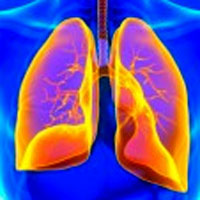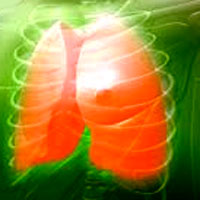Stories Category: Intensive Care

Does Early Mobilization Reduce Time in the Surgical ICU?
Is early mobilization in the surgical intensive care unit (ICU) beneficial? Here is a multicenter, randomized, controlled trial in five university hospitals, where they recruited a total of 200 patients.... read more

Oestrogen Inhibition Reverses PAH and Associated Metabolic Defects
Increased oestrogen is a strong epidemiological risk factor for development of pulmonary arterial hypertension (PAH) in patients, associated with metabolic defects. In addition, oestrogens drive penetrance in mice carrying... read more

Should Transfusions Be Matched by Sex?
In the first large study to look at how blood transfusions from previously pregnant women affect recipients' health, researchers discovered men under 50 were 1.5 times more likely to die in the three years following a transfusion... read more

Evidence-Based Guidelines to Eliminate Repetitive Laboratory Testing
Routine daily laboratory testing of hospitalized patients reflects a wasteful clinical practice that threatens the value of health care. Choosing Wisely initiatives from numerous professional societies have identified repetitive... read more

The World Day of the Critical Lung Event
On November 17th 2017, the first edition of "The World Day of the Critical Lung" will be held. It will be an online, global, free, bilingual (Spanish and English) participatory and non-profit event organized by the Pan American... read more

Patient-reported Outcomes Included Into Daily Practice
Measuring relevant outcomes in a timely manner is a priority in a health care system increasingly focused on the delivery of high-value care. Most quality measures focus on care processes or downstream outcomes such as survival;... read more

Risk of AKI After Intravenous Contrast Media Administration
In the largest well-controlled study of acute kidney injury (AKI) following contrast administration in the ED to date, intravenous contrast was not associated with an increased frequency of acute kidney injury. Rates of acute... read more

Gas Exchange in ARDS
Acute respiratory distress syndrome (ARDS) is characterized by severe impairment of gas exchange. Hypoxemia is mainly due to intrapulmonary shunt, whereas increased alveolar dead space explains the alteration of CO2 clearance.... read more

Understanding Patient Outcomes After ARDS
We identified four post-ARDS outcome subtypes that were predicted by sex, ethnicity, pre-ARDS smoking status and other baseline factors. These subtypes may help develop tailored rehabilitation strategies, including investigation... read more

Telehealth more popular for scheduled and patient-focused visits
New report from CHIME and KLAS virtual care platforms are finding favor for scheduled and patient-focused visits, on-demand and consumer-focused meetings and telespecialty consults. Despite ongoing questions about reimbursement... read more

Detecting Undiagnosed Atrial Fibrillation with Cardiac Monitors
A group of researchers led by James A. Reiffel, M.D., did a study to determine the incidence of previously undiagnosed atrial fibrillation in high-risk patients with the use of insertable cardiac monitors (ICM). The results... read more

Longer hospital stay linked to low health literacy
Low health literacy is associated with a longer hospital length of stay among general medicine patients, according to a study published in the Journal of Hospital Medicine. Ethan G. Jaffee, MD, from Massachusetts General... read more

Continuing Rehabilitation After ICU Discharge
This article discusses technological innovations that promote survival and enhance recovery, starting within the ICU with developments in ventilation, sedation, early mobility and ICU design. Post-ICU, the establishment of... read more

Immunoglobulin G for patients with Necrotising Soft Tissue Infection
The aim of the INSTINCT trial was to assess the effect of intravenous polyspecific immunoglobulin G (IVIG) compared with placebo on self-reported physical function in intensive care unit (ICU) patients with necrotising soft... read more

Frailty Association with Perioperative Morbidity in Patients After Ambulatory General Surgery Operations
Frailty is associated with increased perioperative morbidity in common ambulatory general surgery operations, independent of age, type of anesthesia, and other comorbidities. Surgeons should consider frailty rather than chronological... read more

Comparison of Postoperative Outcomes Among Patients Treated by Male and Female Surgeons
After accounting for patient, surgeon, and hospital characteristics, patients treated by female surgeons had a small but statistically significant decrease in 30 day mortality and similar surgical outcomes (length of stay,... read more

Adverse Effects of Crystalloid and Colloid Fluids
Volume therapy can be managed according to the fluid balance method, the outcome-guided method, or the goal-directed method. One reason why fluid is needed is that anesthesia disrupts the normal autonomic control of the circulation,... read more








